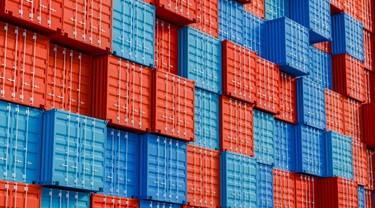After two years defined by the spread of COVID-19, and associated public health restrictions, there was widespread belief that in 2022 we would race full-speed to the path we were on before the pandemic. Now, almost midway through the year, with growth likely to slow and more challenges in view, the global economy faces a bumpy road ahead.
Part of what powered the economic optimism was the historic amount of stimulus that governments and central banks pumped into economies to keep them rolling through the lockdowns. While these policy actions led to shifting consumption patterns, they also helped consumers increase their financial reserves, at a time when spending on travel, hospitality and transportation was drastically reduced. As economies showed signs of reopening, a wave of spending was expected from consumers now flush with cash and eager to satisfy a long since pent-up demand.
But as most of the world reopens and adopts policies to help recover from COVID-19, China continues to adhere to its strict zero-COVID strategy. This has led authorities there to meet sporadic flareups of the virus with extensive lockdowns. During the second quarter of 2022, these policies removed Shanghai and other vital Chinese centres from global supply chains. This hampered companies’ abilities to meet any increase in demand, leaving key inputs and parts stranded for weeks on end, and exacerbating already emerging pricing pressures.
You should also check out
Get the answers you need to make informed business decisions
While China was voluntarily cutting off parts of its economy from the world, Russia’s late-February invasion of Ukraine led to co-ordinated and wide-ranging sanctions that destabilized global commodity markets.
With Russia and Ukraine providing nearly 30% of global wheat exports and countless other staples, global food prices have surged since the beginning of the year. Targeted export bans on foodstuffs by countries, like India and Indonesia, urgently attempting to safeguard domestic supplies, have only exacerbated shortages. And with reduced plantings and rising input costs, we don’t expect prices to come down anytime soon.
Uncertainty around Russia’s significant share of world oil and gas exports has also pushed up global energy prices. We forecast West Texas Intermediate (WTI) oil to average US$102 per barrel in 2022, before easing back slightly, to US$94 per barrel, in 2023. North American—and global—natural gas prices are forecast to remain strong as Europe seeks to diversify away from Russian gas supplies, competing for liquified natural gas cargos and keeping prices elevated.
On balance, elevated commodity prices and a strong U.S. dollar will negatively impact developing market growth. In our summer Global Economic Outlook, EDC Economics forecasts these markets to grow by a combined 3.2% in 2022 and 4.3% in 2023. At the same time, food and fuel price pressures are likely to increase risks around political stability in several countries.
These challenges have further complicated the path ahead, as central bankers walk the fine line of bringing inflation under control without ending an increasingly delicate economic recovery or upending asset prices.
We expect key central banks to continue aggressively increasing interest rates through the end of 2022, with a possibility that the Bank of Canada and the U.S. Federal Reserve briefly surpass terminal levels, in efforts to preserve policy credibility and tackle out-of-control inflation. Aggressive quantitative tightening cycles will also reduce liquidity in the system, further tightening financial conditions and leading to some repricing of risky assets.
As financial conditions tighten, growth will slow. Our forecast calls for U.S. growth of 2.7% in 2022 before decelerating to 2.2% in 2023. Facing more direct impacts from the Russia-Ukraine conflict, Euro area growth will be just 2.2% in 2022 and 2% in 2023, as the continent digests supply chain disruptions and adjusts energy imports away from Russia. The Canadian economy will see modest strength over the next two years, with growth reaching 3.7% in 2022 and 2.2% in 2023.
The bottom line?
The impacts of the war, China’s zero-COVID-19 strategy, ongoing supply chain disruptions and the potential for more political instability have complicated the withdrawal of policy supports without inducing recession and financial market dislocation. We continue to see strength coming from elevated levels of consumer savings, especially in North America. Additionally, while central bank actions are aggressive, interest rates continue to remain low by historical comparison and any increases will take time to feed through.
Overall, our outlook calls for the global economy to grow by 2.7% in 2022 and 3.3% in 2023. That said, however, the probability around our downside scenario, which includes recession, continues to increase and is at its highest since March 2020. So, buckle up, it’s going to be a bumpy ride.
This week, a very special thanks to Ross Prusakowski, director of our Economic and Political Intelligence Centre.
As always, at EDC Economics, we value your feedback. If you have ideas for topics that you would like us to explore, please email us at economics@edc.ca and we’ll do our best to cover them.
This commentary is presented for informational purposes only. It’s not intended to be a comprehensive or detailed statement on any subject and no representations or warranties, express or implied, are made as to its accuracy, timeliness or completeness. Nothing in this commentary is intended to provide financial, legal, accounting or tax advice nor should it be relied upon. EDC nor the author is liable whatsoever for any loss or damage caused by, or resulting from, any use of or any inaccuracies, errors or omissions in the information provided.





